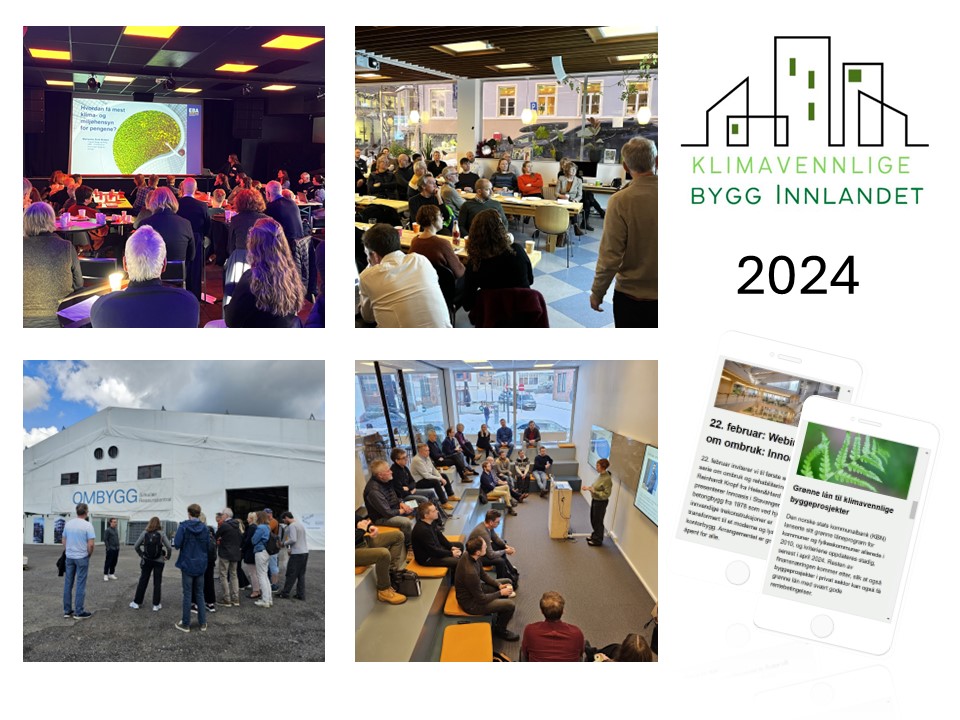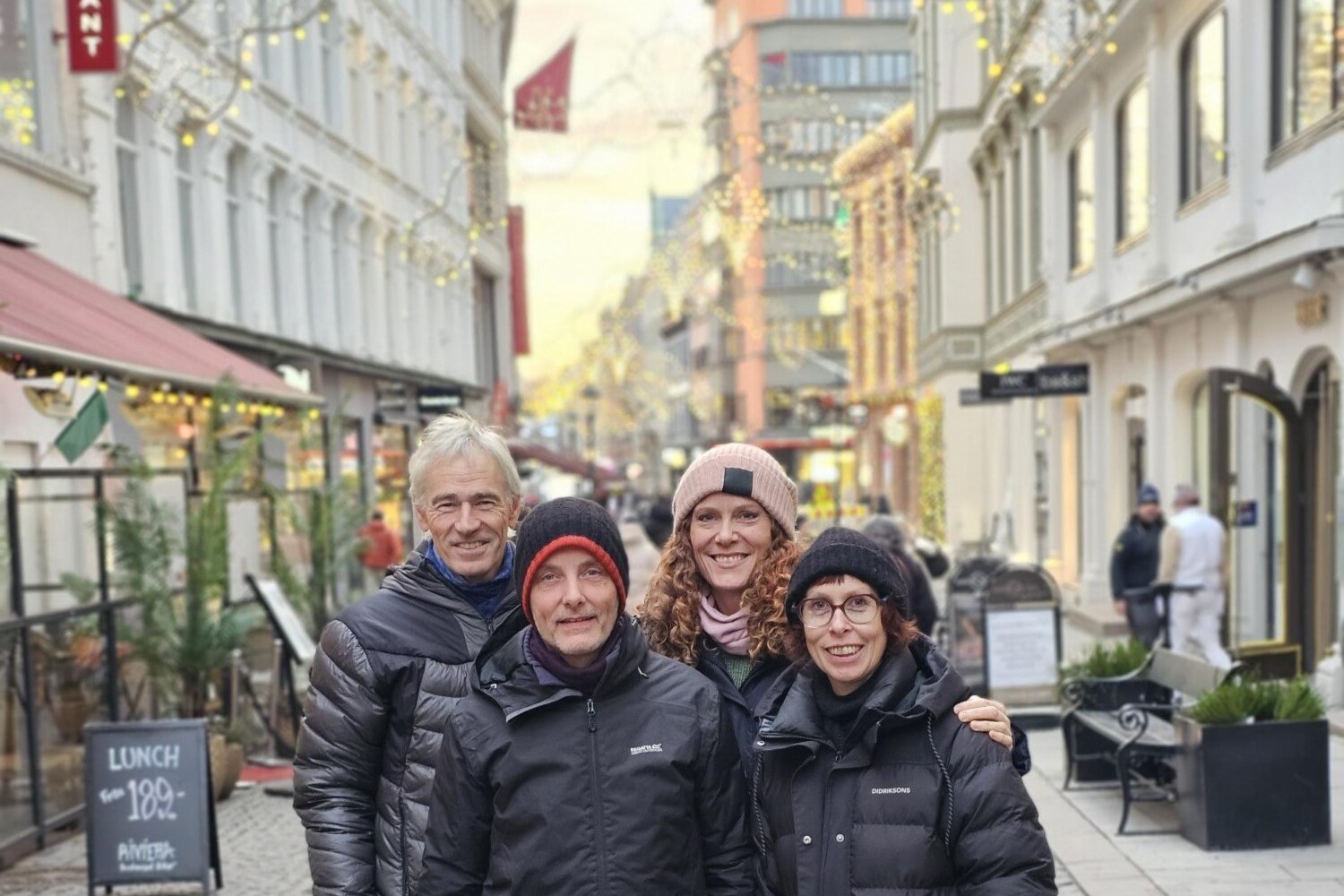Over the course of 2024, our project team has traveled around Inland Norway and held countless meetings with players in the construction industry. We are undoubtedly an industry with a great responsibility for the climate and nature, and we know that the most climate-friendly building is the one that is never built. At the same time, we need buildings to live, work, learn, be cared for, be healthy, meet and thrive in.
Share, learn, inspire
So how can we build what we need in a way that has the least possible negative impact on nature and the climate? The picture is complex, and there is no recipe or formula. So the prescription for this project has been to SHARE knowledge and experience, and INSPIRE to change, and to try and fail.
And it is precisely this willingness to learn and share that has made the biggest impression throughout this year of webinars, professional gatherings and meetings. Builders, contractors, consultants, architects, building product manufacturers and recyclers have willingly shared their knowledge and practical experience of processes and materials. And the participation in the professional webinars and the response to the newsletter has shown that people want to learn more.
Some experiences and thoughts we have had throughout the year:
o There is a great deal of interest in and search for knowledge, especially about reuse and rehabilitation, greenhouse gas calculations and material knowledge.
o Collaboration throughout the value chain is crucial to speed up sustainable construction processes. We need regular meeting places to share good and bad experiences, discuss solutions, opportunities and risks.
o The myth that building climate-friendly is more expensive is still alive. We need to share the good examples that this is not always true – and take operating costs and lifetime into account (Life Cycle Analyses LCA and Life Cycle Costs LCC).
o Many businesses, especially smaller developers and municipalities, may find it difficult to take financial risks. That’s why we need good incentive schemes for risk relief, so that more people dare to take the lead and try out new solutions and establish new and more climate-friendly practices. At present, there are few such schemes.
o Property developers in the rental market often choose certification because they believe it will pay off in a future rental market. On the other hand, public sector developers building and renovating purpose-built buildings such as schools and nursing homes (which will not be rented out) can achieve just as good results without certifying the building. By taking the right steps in terms of reuse, use of materials and construction solutions that make the buildings last longer and can be adapted to future uses.
o Developers and tenants have great power in their orders. By expressing clear requirements for sustainability in the projects at an early stage, there is a great opportunity to influence the end result.
o Many municipalities have good climate plans and, in accordance with the procurement rules, must weight climate and environmental considerations by 30%. Here it is important to include local suppliers in the dialog to ensure that they are able to deliver.
o In order to succeed with the reuse of building materials, the Inland Region needs to build systems in the form of reuse centers and resource databases.
2025: Meeting places and more knowledge
We are following up on our own promise to establish a regular meeting place for the construction industry in Inland Norway, twice a year. The first meeting will take place on April 2 in Hamar and will focus on reuse and greenhouse gas calculations. There will be professional presentations, but also collaboration and plenty of time to mingle and talk during the breaks. Because we know that change and development require collaboration. The second professional gathering will be held in October, time and place not yet determined.
In early February, we invite you to a webinar on how new forms of collaboration in the early phase can make a big difference to the achievement of goals in projects with specific objectives.
Last but not least, we would like to thank you for your cooperation in 2024 and wish you a happy new year!
Greetings project Climate friendly buildings Innlandet v/ project group
Eivind, Marit, Christopher and Mari
The year 2024 in numbers for Climate-friendly buildings Innlandet
Over the course of 2024, 260 people have participated in physical gatherings organized by the project, and 480 people have followed our webinars. In addition, we know that more people have watched recordings of the webinars, but we lack statistics here. The recordings are available on www.klimavennligebygg.no for free use – you can find them in the event calendar, under each individual event.
At the time of writing, the project has 177 subscribers to the newsletter, which is sent out a couple of times a month. In addition, we use LinkedIn to share relevant material. The proportion of people who click on issues is high, which is a sign that the information is useful.
If you have suggestions for topics or issues that should be shared in 2025, please get in touch!


